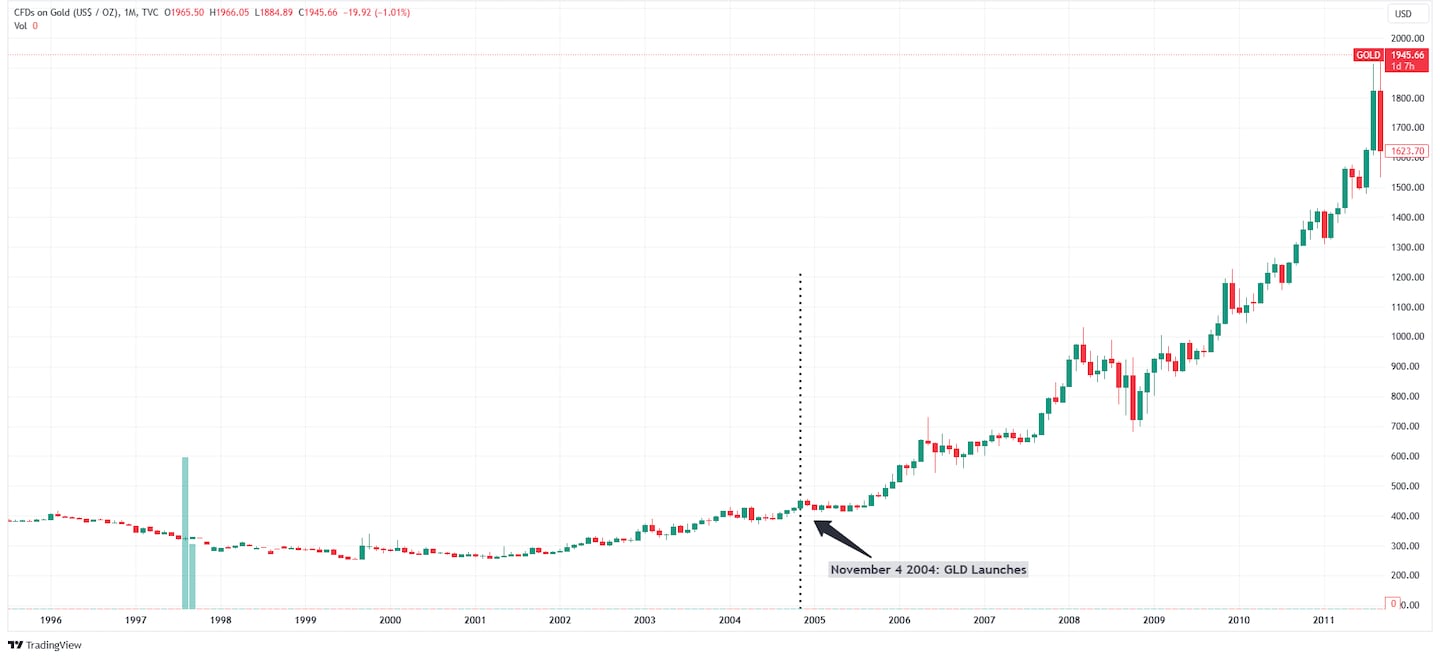Gold’s exchange-traded fund moment back in 2004 offers lessons for Bitcoin investors.
A spot Bitcoin ETF now looks more likely than ever. Approvals and subsequent launches may share similarities with the launch of the first gold ETF, according to experts.
History doesn’t repeat but it rhymes, Joseph Hickey, founder at IntegraCess with previous experience in US ETF market making at Bank of America Merrill Lynch, told DL News.
The gold listing, almost 20 years ago, was advantageously timed as central banks had just finished selling their gold at the time, Hickey said, adding that prices had bottomed and people started buying it as a hedge against policy failure.
Now read: Larry Fink says Bitcoin is ‘digitalising gold’ in another sign BlackRock is all-in on crypto
The launch of a spot Bitcoin ETF could make the digital asset a better tool for lending or financing collateral, Hickey said, adding that it could also become more liquid and less expensive to transact.
“All good things for the asset class,” he said.
Going for gold
The launch of the first gold ETF provides an example of how spot ETFs can “democratise” an asset, said Jennifer Murphy, CEO and founder at Runa Digital.

Following its launch, the first gold ETF reached more than $1 billion in assets in three days, she said, which was “the fastest ever to do so, a record it held for 18 years, and gold prices broke out and sustained a multi-year bull run.”
Gold prices eventually doubled after its ETF launch; it took about four years.
Now read: Coinbase’s inscrutable fee model may backfire as Wall Street giants gun for Bitcoin ETF
The only ETF to hit that number in a shorter period of time was ProShares Bitcoin futures ETF in 2021. It attracted $1 billion in investment in just two days. The price impact on Bitcoin was negligible.
Big events in crypto have been associated with peaks in crypto prices, Hickey told DL News, adding that this could play out similarly.
Bitcoin traded at about $60,000 when ProShares launched the first Bitcoin futures ETF in the US, reaching a record high just short of $69,000 a few days later. It’s down almost 60% since.
Eric Balchunas and James Seyffart, Bloomberg Intelligence ETF analysts, said Thursday that the SEC will probably want to avoid being a “kingmaker” again by approving one fund first. Cathie Wood also expects the commission to accept multiple applications at once.
Long game
The crypto market hasn’t properly valued Grayscale’s win versus the US Securities and Exchange Commission last week, according to some analysts.
Investors may be dramatically underestimating the impact of US Bitcoin ETFs, Vetle Lund, a research analyst at K33 Research, formerly Arcane, said in a report Tuesday.
Odds for US approval have “never been higher,” Lund said, and in spite of this, Bitcoin continues to trade around or below its price when BlackRock joined the race in June.
If a spot ETF is approved, Lund expects large inflows into Bitcoin due to “competition and simultaneous launches.” Inflows into Bitcoin investment vehicles have had a strong relationship with Bitcoin price increases over the past four years, he added.
Still, the expectation of big inflows may be exaggerated — it could take much longer for prices to soar.
The level of competition for spot Bitcoin ETFs may also impact inflows.
ProShares has the majority of the volume in the Bitcoin futures ETF market, with about $1.1 billion in assets under management. Other funds pale in comparison. VanEck and Valkyrie’s products manage just $45 million and $29 million, respectively.
Adam Morgan McCarthy is DL News’ London-based Markets Correspondent. Got a tip? Reach out at adam@dlnews.com.
